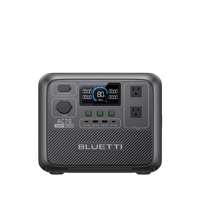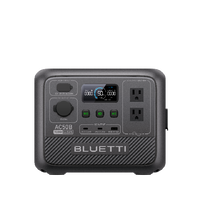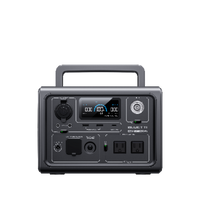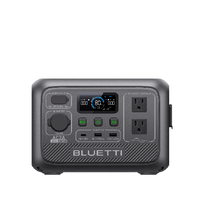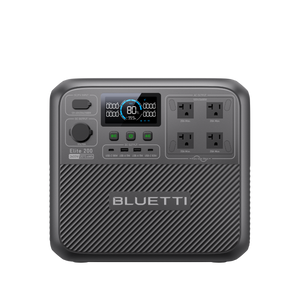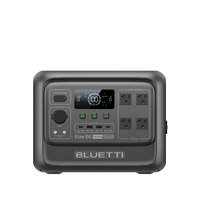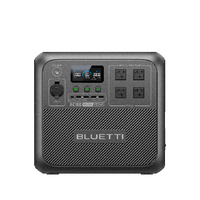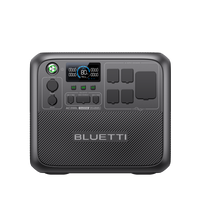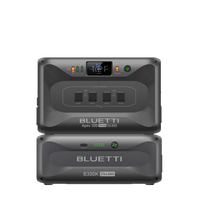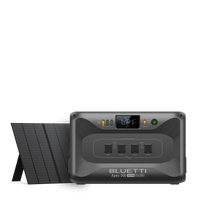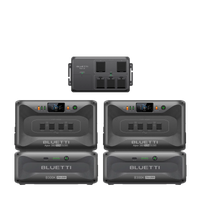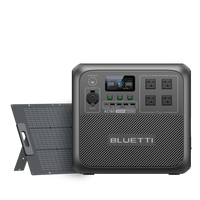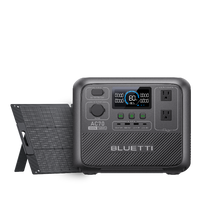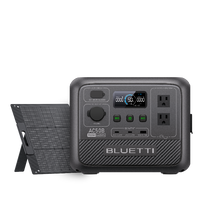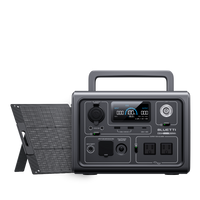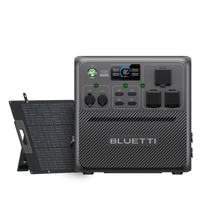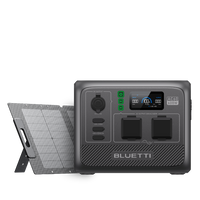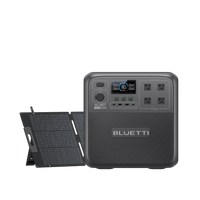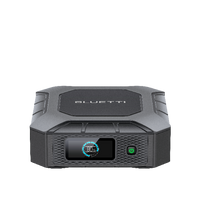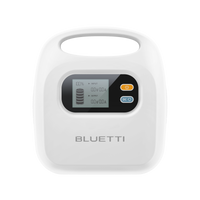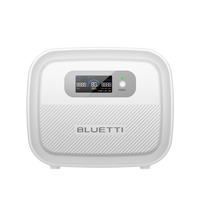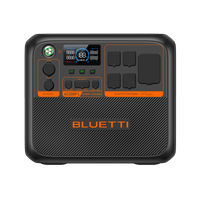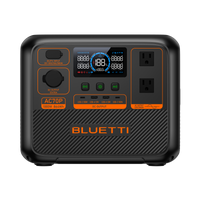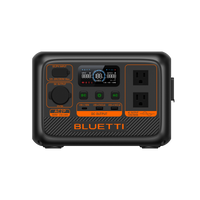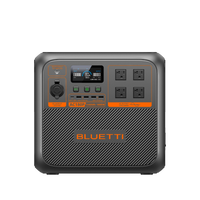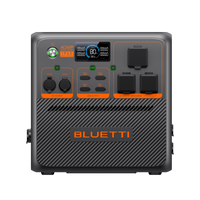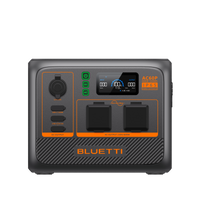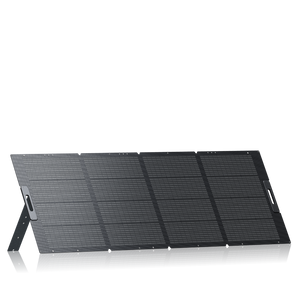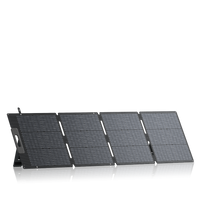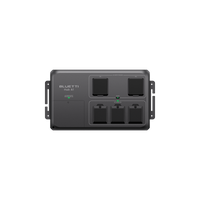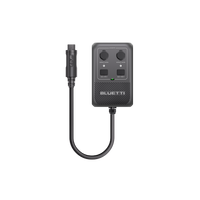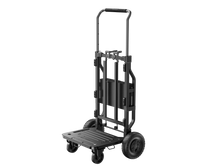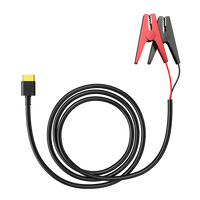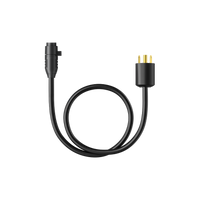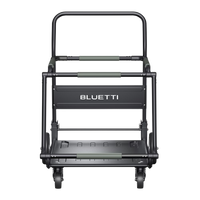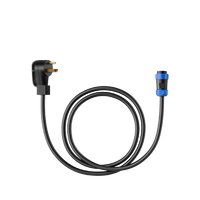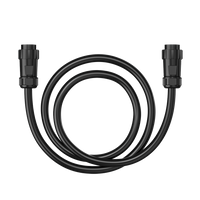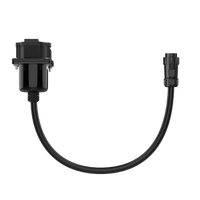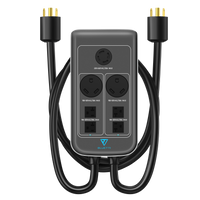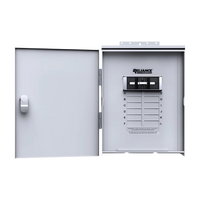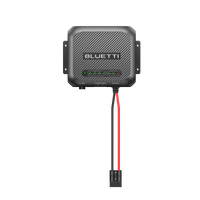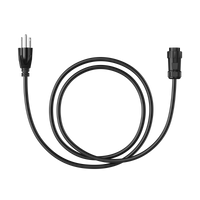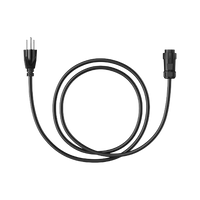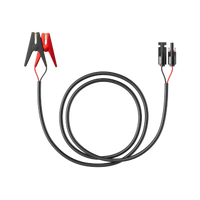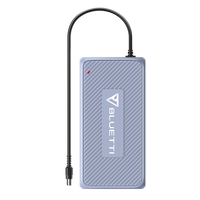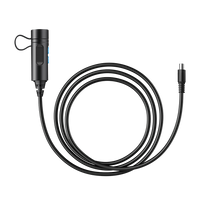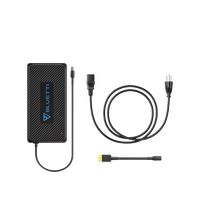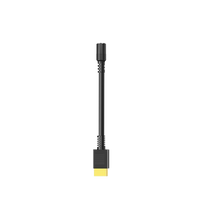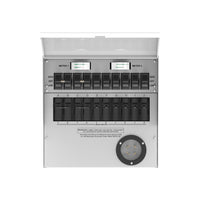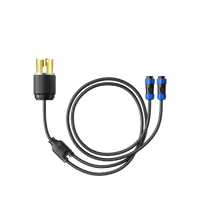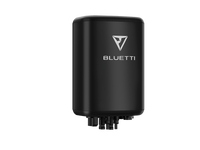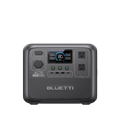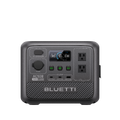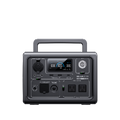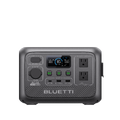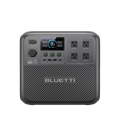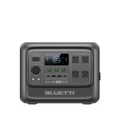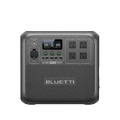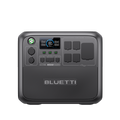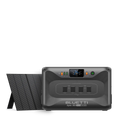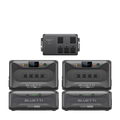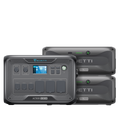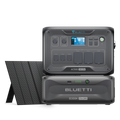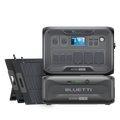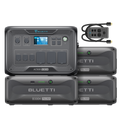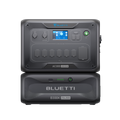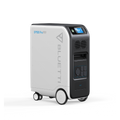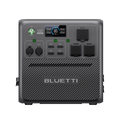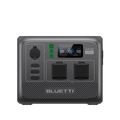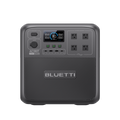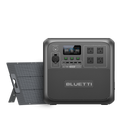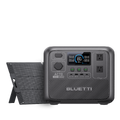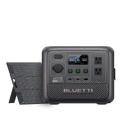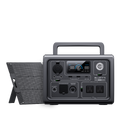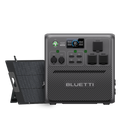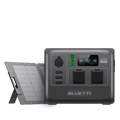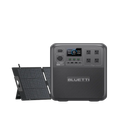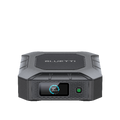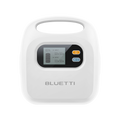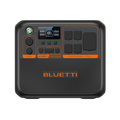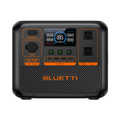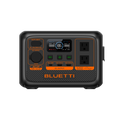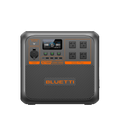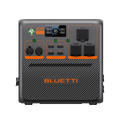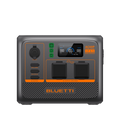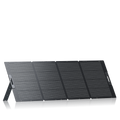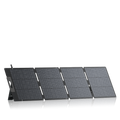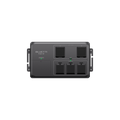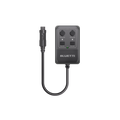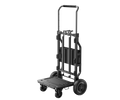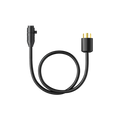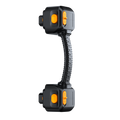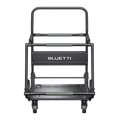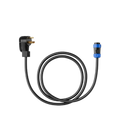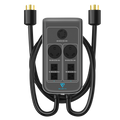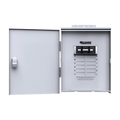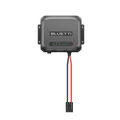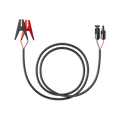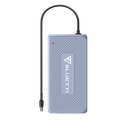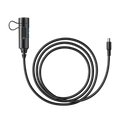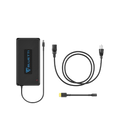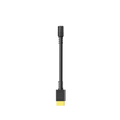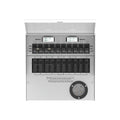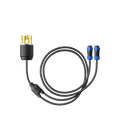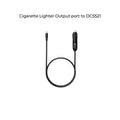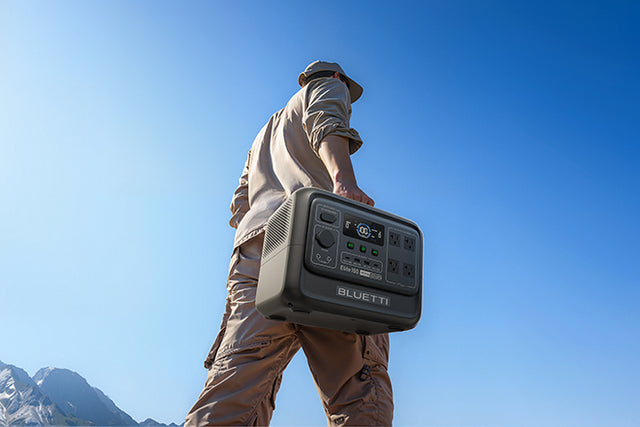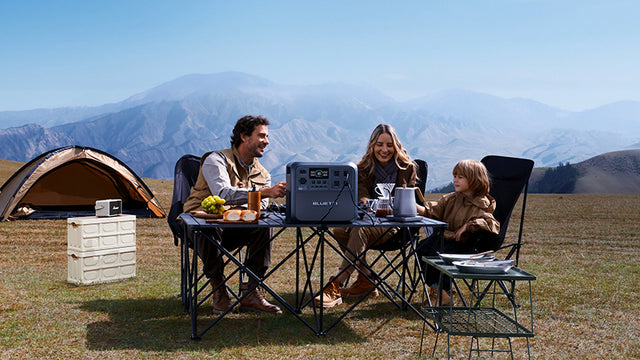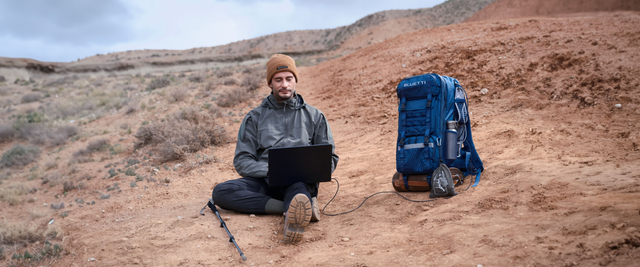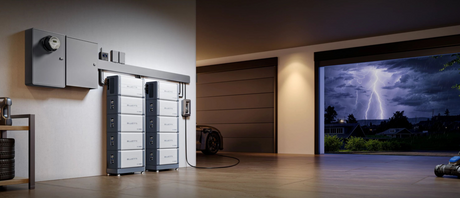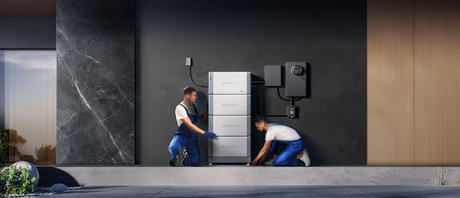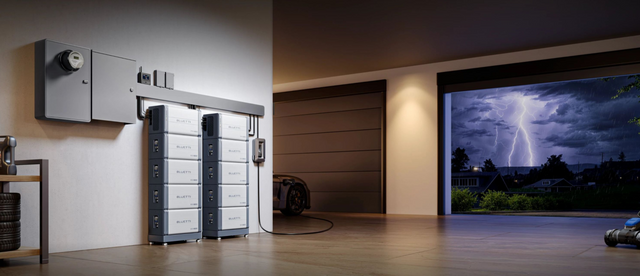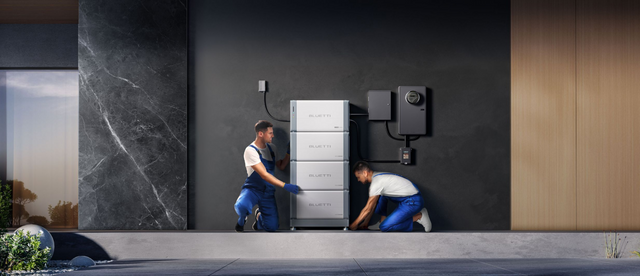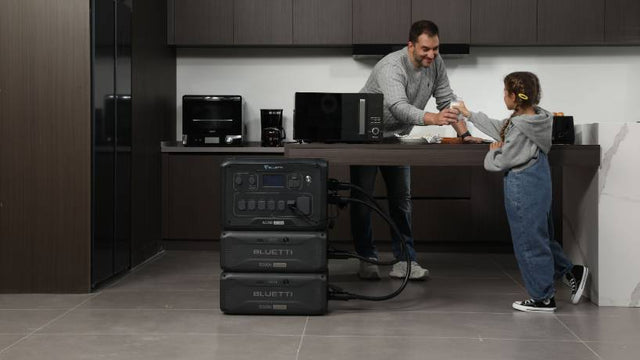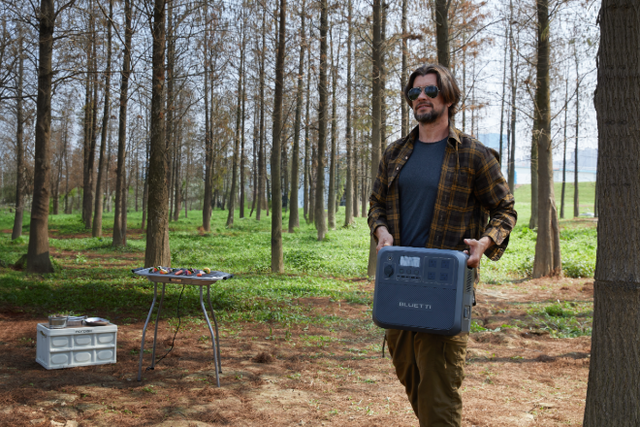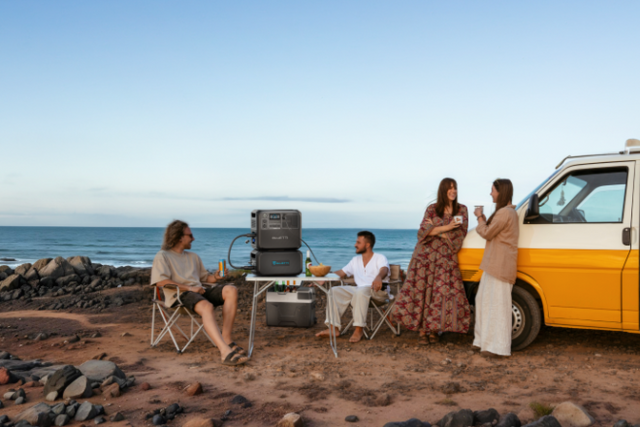Your cart is empty
Shop our products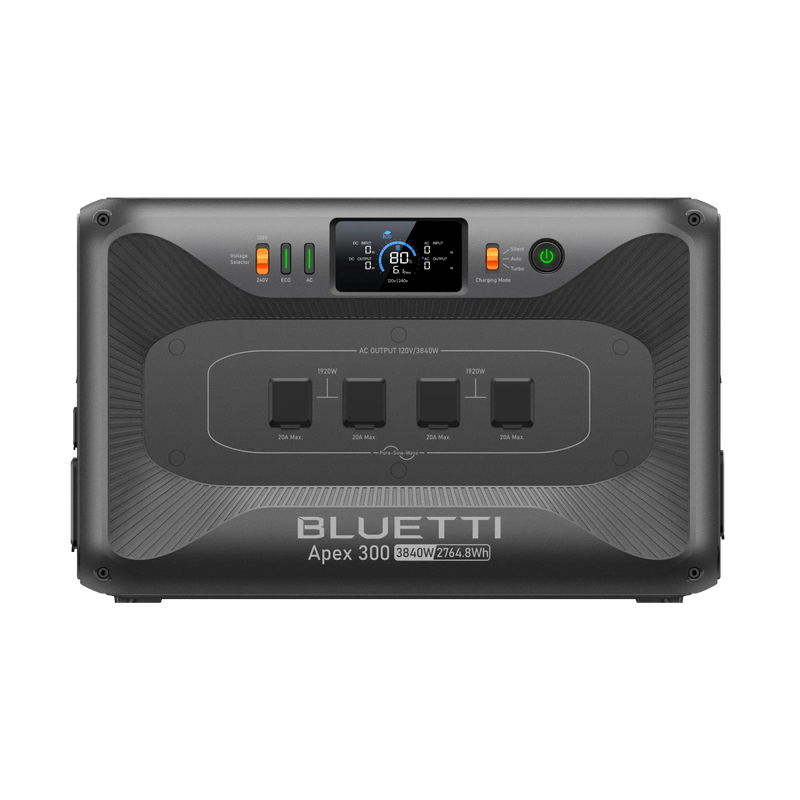
Power outages can be disruptive regardless of whether they’re caused by storms, grid malfunctions, or scheduled maintenance issues. A reliable alternative source of power can make the difference between a minor disruption and a major inconvenience. A 7500-watt generator represents the best in portability and power output balance that will be sufficient for a broad range of household appliances, critical systems, and tooling.
So, what exactly can a 7,500-watt generator run? Let’s find out. This blog post will investigate what a 7500-watt generator can do and look at it in relation to the smaller, portable alternatives. It will help you analyze your specific power needs so you're prepared for any situation.

What Is a 7500-Watt Generator?
A 7,500W generator is a portable or standby device that keeps providing a steady 7,500 watts of power for your needs. It can yield 9000–9500 watts of surge power, which can last for a few seconds to switch on motor-operated devices such as fridges or power tools. But what is operational and surge power?
-
Running or Operational Watts: It’s the steady power an appliance needs to keep working, like a fridge that uses 600–800W while running. This is the minimum power your 7,500W generator must provide continuously.
-
Starting or Surge Watts: It’s the additional power required for a few seconds when something first turns on, especially items with motors like fridges, ACs, or power tools.
Your 7,500W generator should be able to support running watts as well as starting watts without exceeding the limit. Normally, it can juice up multiple appliances at once, which makes it ideal for residential backup, construction sites, or recreational activities. It can give both 120V for standard appliances like lights and TVs, and 240V for power-hungry equipment like well pumps or HVAC. The 7,500W generator is available in several variants, such as:
- 7,500W Gas Generator: Comes in numerous fuel options, like gasoline, propane, diesel, and blends, to provide flexibility.
- 7500W Solar Generator: Eco-friendly and uses solar panels. It can power residences, RVs, or outdoor devices without emissions.
- 7500W Inverter Generator: Noiseless and fuel-efficient, which makes it secure for electronics like phones, laptops, and TVs.
The running span of a 7,500-watt generator differs with its load and tank capacity, but is normally around 8-12 hours at half load. Its noise is in the 65–75 decibels range, comparable to a vacuum cleaner, with inverter models being quieter. Moreover, it comes with a mix of standard outlets, heavy-duty 30A or 50A outlets for RVs or transfer switches, and sometimes USB ports.
Power Calculations: Watts to Amps Explained
It is necessary to get a basic understanding of some terms if one is to use this 7500-watt generator safely. Watts (W) tell you how much total power your appliances need. Amps (A) show how much electrical current is being drawn from the generator. While Voltage (V) is the term for the type of power that is supplied.
Standard appliances in residences utilize 120 volts, and power-hungry equipment uses 240 volts. A 7,500W generator supplies about 62.5 amps when it is running at 120 volts (across numerous circuits). At 240 volts, it yields 31.25 amps, and this is ideal for 30-amp or 50-amp RVS or transfer switches.
At 120V, 7500 Watts to Amps:
Amps = Watts ÷ Volts = 7500 ÷ 120 =62.5A
At 240V, 7500 Watts to Amps:
Amps = Watts ÷ Volts = 7500 ÷ 240 =31.25A
Examples:
-
Refrigerator: 800W ÷ 120V = 6.7A
-
Window AC: 1500W ÷ 120V= 12.5A
-
Water Heater: 4500W ÷ 240V= 18.75A
Note: 120V outlets are able to provide 15–20 amps of electricity, and 240V circuits are able to function with 30-50 amps for large appliances.
How to Stop Overburdening a 7,500W Generator?
Ensure the total wattage and surge wattage of all operating devices are within the generator’s maximum capacity. First, you should find out how much energy your appliances require. The first step is to look into the amount of energy your appliances consume. For example:
- Refrigerator (800W operational, 2,000W surge).
- Sump pump (1,500W operational, 3,000W surge).
- LED lights (200W).
- Microwave (1,200W).
Sum up the operational watts: 800 + 1,500 + 200 + 1,200 = 3,700W.
Next, include only the highest starting surge (not all appliances start at once). Here, the sump pump experiences the maximum surge at 3000W.
So, the total operational power needed is 3,700W running + 3,000W surge, which is a safe number for a 7,500W generator.
What If You Go Overboard and How to Avoid It?
Overloading a 7500-watt generator can trip the circuit breaker, ruin electronics by causing power spikes/drops, and even overheat the generator, which reduces its lifespan. In order to avoid this, concentrate on running the essentials, such as the fridge, sump pump, and lights.
Also, avoid starting multiple high-power devices at the same time. Use a load manager or transfer switch to control what’s running, and always check appliance labels for their exact wattage.

Common Appliances and Tools a 7,500W Generator Can Power
A 7,500W generator can power a home during an outage, work sites, and appliances used during outdoor events. But you need to be careful not to overload it, especially when some devices need extra power to start up. Here’s a breakdown of the operational and starting power of tools it can juice up in different scenarios, and what it can’t run at the same time:
For Home Backup Power
A 7500W generator can keep crucial home systems running during an outage. Note that some appliances have either no starting power or a very minor starting surge.
|
Appliance |
Running Watts |
Starting Watts |
|
Refrigerator/Freezer |
600–800W |
1,200–2,000W |
|
Ceiling Fan |
80W |
70W |
|
Sump Pump |
800–1,500W |
2,300–3,000W |
|
Washing Machine |
1,100W |
2,200W |
|
Hair Dryer |
1,200W |
- |
|
Microwave |
600–1,200W |
- |
|
Electric Clothes Dryer |
4,500W |
5,500W |
|
Lights (LED/CFL) |
100–500W |
- |
|
TV & Electronics |
200–500W |
- |
|
Wi-Fi Router |
10–20W |
- |
|
Central AC (3–4 Ton) |
3,500–5,000W |
6,000–8,000W |
|
Window AC (12,000 BTU) |
1,200–1,500W |
2,200–3,500W |
|
Electric Water Heater |
3,000–4,500W |
- |
|
Well Pump (1/2 HP) |
1,000–1,500W |
2,000–3,000W |
|
Electric Stove (1 Burner) |
1,200–1,800W |
- |
Scenario 1: Home Backup During a Blackout
A 7500-watt generator is able to power multiple household appliances simultaneously during an outage. For example, it can run:
- Refrigerator (800W).
- Sump Pump (1,500W).
- Lights + TV + Router (500W total).
- Microwave (1,200W).
- Window AC (1,500W).
- Well Pump (1,500W operational, 3,000W starting surge).
The mentioned appliances use around 6,000 watts during normal utilization and up to 9,000 watts every time they switch on. That is under the maximum power of both the operational (7,500 watts) and surge (9,500 watts) limits of the generator. Nevertheless, it is not recommended to have an electric clothing dryer (4,500W) or central air conditioner (5,000W) thrown into the mix. They both consume too much energy and would overburden the generator.
Scenario 2: Running Essential Home Systems + Limited HVAC
You can also juice up home essentials with a limited HVAC system with a 7.500 watts generator. To do so:
- Refrigerator (600- 800W running, 1,200–2,000W starting).
- Lights + Electronics (500W).
- Microwave (1,200W).
- Electric Water Heater (4,000W).
This adds up to about 6,500 running watts, which is within the generator’s limit. Since only the fridge has a small surge when starting, there’s no big spike in power use. But adding a central air conditioner (5,000W) would add up to 11,500 watts, which is too much. An electric stove (1,800W) would overload the 7,500 running watt capacity, so it cannot be added either.
For Construction & Job Sites
A 7500W generator is powerful enough for contractors using multiple tools simultaneously:
|
Tool |
Running Watts |
Starting Watts |
|
Circular Saw |
1,200–1,800W |
2,400–3,500W |
|
Air Compressor (1.5 HP) |
1,500–2,000W |
3,000–4,500W |
|
Drill/Driver |
500–1,000W |
1,000–1,500W |
|
Angle Grinder |
1,000–1,500W |
2,000–2,500W |
|
Table Saw |
1,800–2,500W |
3,500–5,000W |
|
Welder (120V/240V) |
2,000–5,000W |
– |
Scenario: Job Site with Multiple Power Tools
At a work site, a 7500-watt generator can operate numerous power tools at the same time, including:
- Circular Saw (1,800W operational, 3,500W surge).
- Air Compressor (2,000W operational, 4,500W surge).
- Drill (800W operational, 1,500W surge).
- LED Work Light (100W).
Together, these use about 4,700 running watts and can spike up to around 9,500 watts when starting. They remain under the generator’s capacity, provided the tools don’t switch on simultaneously. A table saw (2,500W with a 5,000W surge) would be too high a surge load, though. Whereas a welder (5,000W) would require more continuous power than the generator supplies.
For Outdoor Events & Catering
A 7500W generator can support large gatherings, food trucks, and entertainment setups:
|
Equipment |
Running Watts |
Starting Watts |
|
Food Truck (Small) |
3,000–5,000W |
6,000–8,000W |
|
Portable Heater |
1,500W |
– |
|
PA System & Speakers |
500–2,000W |
- |
|
Stage Lighting (LED) |
200–1,000W |
- |
|
Coffee Machine |
800–1,500W |
– |
|
Blender/Ice Maker |
500–1,000W |
1,500–2,000W |
Scenario: Outdoor Event with Food & Sound
For an outdoor event, a 7500-watt generator can run:
- Small Food Truck (4,000W running, 7,000W surge).
- PA System (1,000W).
- LED Stage Lights (500W).
- Coffee Machine (1,200W).
In total, that is approx 6,700 operational watts and 8,500 watts at surge, which is still within safety as long as the food truck is powered first. But if a portable heater (1,500W) is thrown into the mix, the total operational watts would be 8,200, which is too close to the limit. Adding a blender and an ice maker, both of which can surge to 1,500 watts combined, also threatens to encumber the generator.

7500W Gas Generator vs. 7500W Portable Power Stations
In comparing a standard 7,500W gas generator to a portable power station of 7,500W for backup power, ponder over numerous aspects. For instance, weigh up what energy is required, its span, noise level, fuel consumption, and effects on the environment. Each system offers both good and bad things, and you should use the one that meets your unique needs. Here’s the explanation:
7,500W Gas Generator
A 7500W gas generator is best for home backup power (like running fridges, ACs, and sump pumps). It’s also ideal for construction sites (for heavy tools such as air compressors and welders) and off-grid cabins where fuel is easy to get. When using a gas-powered generator, always place it at least 20 feet from your home and never inside an enclosed space to avoid carbon monoxide poisoning. Here are its pros and cons:
|
Pros |
Cons |
|
|
7,500W Portable Power Stations
7,500W portable power stations are excellent for quiet backup power, ideal for powering electronics, medical equipment, and lights. They’re perfect for solar-powered systems in off-grid homes, RVs, or camping. In addition, they operate just fine during short power outages that last for a day or two, depending on the usage of power. Here are their pros and cons:
|
Pros |
Cons |
|
Lower Power Output: Not ideal for big appliances like central AC. Shorter Run Time: Limited by battery size and needs recharging. Expensive: Higher upfront cost than gas generators. |
Recommended 7,500W Portable Power Stations
If you’re familiar with off-grid life, enjoy spending time outside, or just require power when the main electricity goes out, portable power stations fit your needs. The BLUETTI AC500 + 2*B300K is able to provide 5,000W of power. With two AC500 units in parallel, it boasts 10,000W of output, which is more than enough for most power-voracious appliances, like juicing up a Central AC.
It supports 240V output for heavy-duty devices through split-phase bonding and offers expandable storage from 2,764.8Wh to 16,588.8Wh. The unit also features 24/7 backup power, smart app control via Wi-Fi or Bluetooth, and 16 outlets to power nearly any device. Due to its 0–80% charging speed (achieved by 3,000W input) and 8,000W dual charging, this unit is flexible and quick in providing power when needed.
Appliances Running Time With BLUETTI AC500 + 2*B300K
5529.6Wh × 90% × 90% ÷ Load Power ≈ hours
Refrigerator (800W): 5.59 hours.
Washing Machine (1,100W): 4.07 hours.
Microwave (1,200W): 3.73 hours.
Ceiling Fan (80W): 55.90 hours.
Sump Pump (1,500W): 2.98 hours.
|
BLUETTI AC500 (5,000W / 10,000W) At 120V (Standard Household Outlets) |
||
|
Configuration |
Watts (W) |
Amps (A) |
|
Single Unit |
5,000W |
41.7A |
|
Dual Units (Parallel) |
10,000W |
83.3A |
|
BLUETTI AC500 (5,000W / 10,000W) At 240V (Heavy-Duty Appliances) |
||
|
Configuration |
Watts (W) |
Amps (A) |
|
Single Unit |
5,000W |
20.8A |
|
Dual Units (Parallel) |
10,000W |
41.7A |
Another BLUETTI home backup solution for medium-sized homes, like the Apex 300, features 3840W output power and 2,764.8Wh to 58kWh capacity. When two units are in parallel, the output can go up to 7680W, keeping essentials like your fridge, Wi-Fi, and CPAP running during outages. The Apex 300 also comes with weather alerts and can auto-charge when the weather is bad. Moreover, it offers instant backup power with 0ms switchover and supports EV charging with a 12kW bypass.

It also provides other fast charging options like the standard solar (2,400W), AC + solar (3,840W), and generator (3,840W). With TurboBoost AC charging, you can juice up Apex 300 to 80% in 45 minutes and fully in 65 minutes. The unit features 6 AC outlets, Hub D1 capability for space-saving DC charging, and 120V/240V split-phase bonding.
With BLUETTI SolarX 4K and AT1, the Apex 300 supports 4kW–30kW solar input and functions with existing rooftop systems via AC coupling, perfect for DIY setups. You can also cut costs by charging the unit when energy is cheap and then using the stored energy when it’s pricier.

Appliances Running Time With BLUETTI Apex 300
2764.8Wh × 95% × 90%÷Load Power ≈ hours
Refrigerator (800W): 2.96 hours.
Washing Machine (1,100W): 2.15 hours.
Microwave (1,200W): 1.97 hours.
Ceiling Fan (80W): 29.56 hours.
Sump Pump (1,500W): 1.58 hours.
|
BLUETTI Apex 300 (3,840W / 7,680W) At 120V (Standard Household Outlets) |
||
|
Configuration |
Watts (W) |
Amps (A) |
|
Single Unit |
3,840W |
32A |
|
Dual Units (Parallel) |
7,680W |
64A |
|
BLUETTI Apex 300 (3,840W / 7,680W) At 240V (Heavy-Duty Appliances) |
||
|
Configuration |
Watts (W) |
Amps (A) |
|
Single Unit |
3,840W |
16A |
|
Dual Units (Parallel) |
7,680W |
32A |
FAQs
So, what can you actually power with a 7500-watt generator?
Honestly, it totally depends on how much juice your stuff sucks up at the same time. It will last longer when powering low-demand items (e.g., a fridge and lights) compared to powering high-demand items like an air conditioner and microwave. Take the case of:
- Microwave (1,200W).
- Laptop (100W).
- Lights (200W).
When all these devices are being juiced up by a 2*Apex 300 (5529.6Wh battery capacity) using a solar generator, the runtime will take:
Runtime =Battery Capacity × 95% × 90%÷ Total Wattage = 5529.6Wh × 0.95 × 0.9 ÷ 1500W=3.15 hours
How long can you run a 7500-watt generator non-stop?
With around 6 or 7 gallons of gas, set somewhere around half-load, you’re probably looking at 8 to 12 hours before it starts gasping for fuel. Whereas a 20-pound tank of propane will support your appliances from 6 to 10 hours. Not too shabby if the power’s out for just a night or two. However, check the manual for exact run times.
Is a 7500-watt generator enough to keep your whole house running?
Yes. For most folks with a smallish or mid-sized house? Yeah—it’ll keep your lights on, the fridge cold, your furnace humming, and a sump pump working, and you might swing a coffee maker or TV in the mix, too. But it can’t support all the big appliances at once.
Is it viable for a 7500W generator to manage a central air conditioner?
Yes. You can use a 7500W generator to power up a 3–4 ton central air conditioner. It can give power up to 8,000 watts during a surge and 3,500–5,000 watts to keep your AC running. In addition, avoid turning on multiple high-powered devices simultaneously to prevent overloading the generator.
Conclusion
A 7500-watt generator is versatile enough to power most home appliances, essential systems, and tools in emergency or off-grid scenarios when managed wisely. Several appliances and items like refrigerators, sump pumps, power tools, and even air conditioners can be powered by it without a problem, only if you take into account their surge watts.
However, gas generators may not suit every need, particularly indoors or for sensitive electronics, where alternatives like BLUETTI portable power stations provide quieter, emission-free options. If you would rather go for a power station, we recommend the BLUETTI AC500 and the Apex 300. They’re ideal for indoor, off-grid living, RVs, camping, hiking, and outdoor events.

